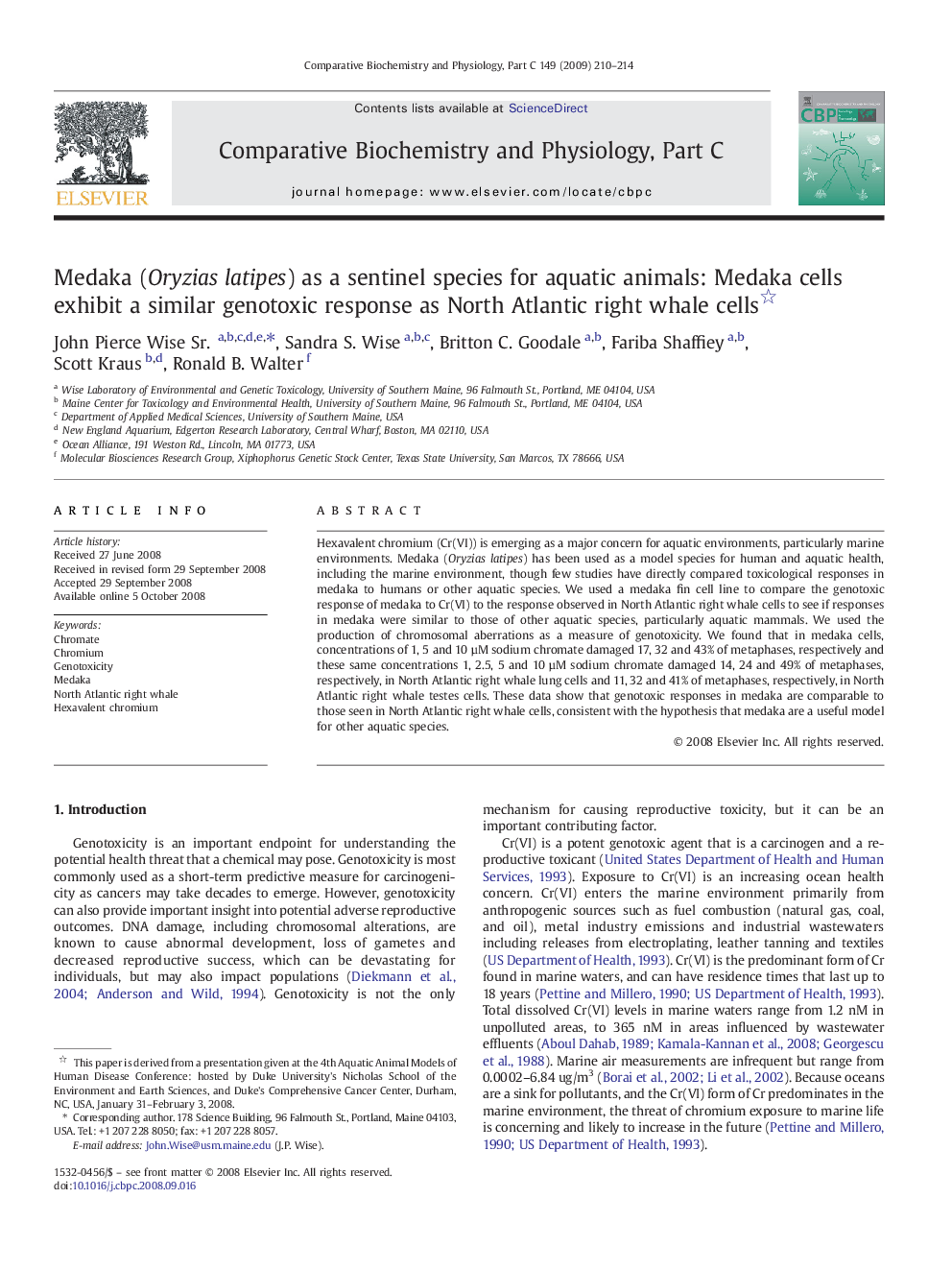| Article ID | Journal | Published Year | Pages | File Type |
|---|---|---|---|---|
| 1977515 | Comparative Biochemistry and Physiology Part C: Toxicology & Pharmacology | 2009 | 5 Pages |
Hexavalent chromium (Cr(VI)) is emerging as a major concern for aquatic environments, particularly marine environments. Medaka (Oryzias latipes) has been used as a model species for human and aquatic health, including the marine environment, though few studies have directly compared toxicological responses in medaka to humans or other aquatic species. We used a medaka fin cell line to compare the genotoxic response of medaka to Cr(VI) to the response observed in North Atlantic right whale cells to see if responses in medaka were similar to those of other aquatic species, particularly aquatic mammals. We used the production of chromosomal aberrations as a measure of genotoxicity. We found that in medaka cells, concentrations of 1, 5 and 10 µM sodium chromate damaged 17, 32 and 43% of metaphases, respectively and these same concentrations 1, 2.5, 5 and 10 µM sodium chromate damaged 14, 24 and 49% of metaphases, respectively, in North Atlantic right whale lung cells and 11, 32 and 41% of metaphases, respectively, in North Atlantic right whale testes cells. These data show that genotoxic responses in medaka are comparable to those seen in North Atlantic right whale cells, consistent with the hypothesis that medaka are a useful model for other aquatic species.
